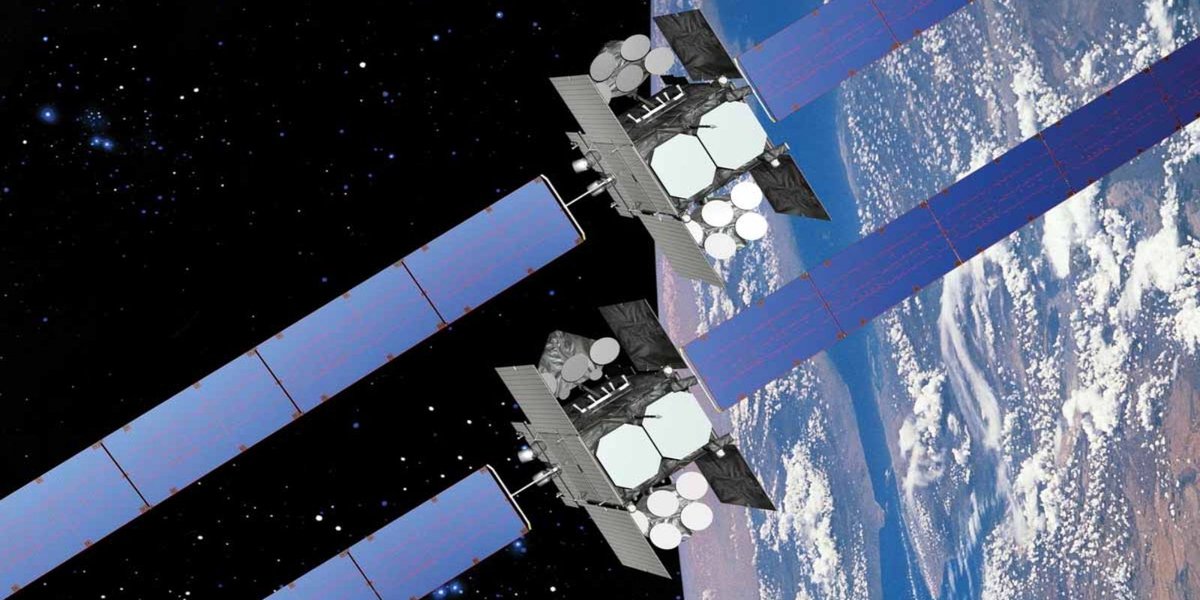SPACE FORCE IS NOW RESPONSIBLE FOR ALL MILITARY SATELLITE COMMUNICATION
By Buddy Blouin

Advertisement
Since the formation of the U.S. Space Force, safeguarding American communications has been at the forefront of the newest military branch’s focus. Now, all military satellite communication conducted by the American Armed Forces will be the responsibility of Guardians around the globe. Both the Wideband Global Satcom and Defense Satellite Communications System constellations of military satellites are being transferred.
More like this: What's the Story Behind the Space Force Flag?
Protecting Satellite Communication Is a Key Role of Space Force
Until recently, other military branches, such as the U.S. Air Force and the U.S. Army, were dividing the duties of monitoring American communications. Having its roots in the Air Force, the USSF would end up being formed with a focus on America’s space exploration and communications. "This historic transfer from the Army to the Space Force will mark the first time all Department of Defense military satellite communication functions have been consolidated under a single military service," said the Space Force via press release. While the U.S. Army is handing over satellite operations to Space Force, the Army will still have a role in space. The USSF will gain control of both the Wideband Global Satcom and Defense Satellite Communications System constellations of military satellites that were built and launched by the U.S. Air Force. The Army did, however, control the payloads of these systems. The expansion of the Space Force’s role in operating communications satellites will see the branch become responsible for satellite communication for the military, leading to a big shift in the organization. Most notably, as many as 500 members working at the Army's Space and Missile Defense Command will now answer to Schriever SFB. This move also comes at a time when the Army is pushing $78 million of its 2022 budget to the USSF to assist with its reorganization and expansion. Space Force's Deputy Chief of Operations, Lt. Gen. Bradley Chance Saltzman, spoke on the necessity of the move back in 2021. "We need to create this unity of effort around our space missions to ensure we're up to those challenges that we face because the space domain has rapidly become far more congested, and far more contested than...when I was a lieutenant or a captain operating space capabilities," said Lieutenant Saltzman. Of the 500 people affected, around 200 are civilians. These civilians can be found far beyond the main Army installation being affected and are at facilities all around the world. Their efforts will now be devoted to the Space Force as they continue to assist in satellite communications.How Do Satellites Help With Communication?
By using radio waves, satellite communication is possible to relay messages and data across the air in even the most remote locations. This is an important feature when it comes to communication on the battlefield. Things such as fixed wireless, 5G, and WiFi are all great options, but the infrastructure necessary to make them happen can be difficult during war. While all are used, satellite communication remains an important component of the military's overall communication efforts. Despite being high above us in space, a communication satellite has no problem transmitting lines of communication, the Internet, or our favorite shows down here to Earth. Okay, maybe “no problem” is a bit of a stretch, as interference can happen, but it’s still a great way to get the job done. Two elements that the Space Force will continue to have to overcome include weather conditions and line of sight. All it takes is a severe thunderstorm during your favorite show on satellite TV to see that a communications satellite requires attention because the elements can cause some obstacles that prohibit the ability to send and receive signals.Advertisement
USSF Satellite Communications Expansion Is Just Part of It
Space Force has ambitious goals for year three of operations, and the shift in responsibilities regarding satellites is just the latest development. The Naval Satellite Operations Center (NAVSOC) at Naval Base Ventura County was put under USSF control in June 2022. There has been a push to transfer troops from other branches, such as the Army and Navy, but Congress has pushed back. Military budgets and bureaucracy continue to make hurdles to jump over for the youngest branch of the U.S. military. Technology continues to advance, and the full scope of the Space Force’s responsibilities won’t be known for quite some time. But having to maintain military satellite communication seems to be a great step in the right direction that's in line with the goals of various military branches. Read next: Chance Saltzman Nominated As New Chief of Space Operations for USSFWritten by
Buddy Blouin
Buddy Blouin is a Contributing Writer at VeteranLife.com
Buddy Blouin is a Contributing Writer at VeteranLife.com
Advertisement
SHARE:



